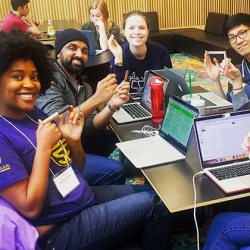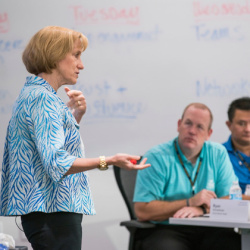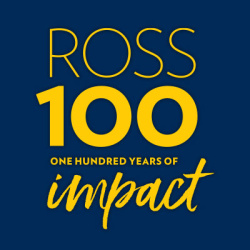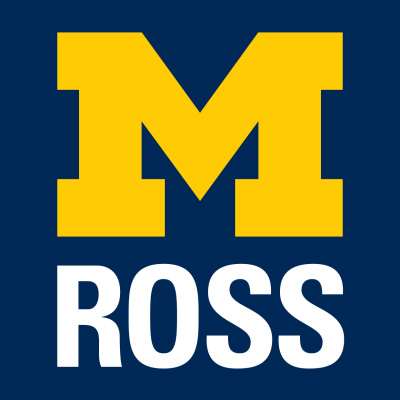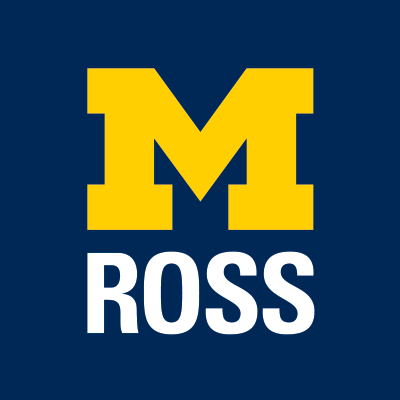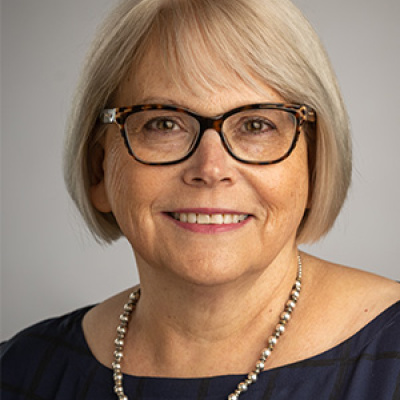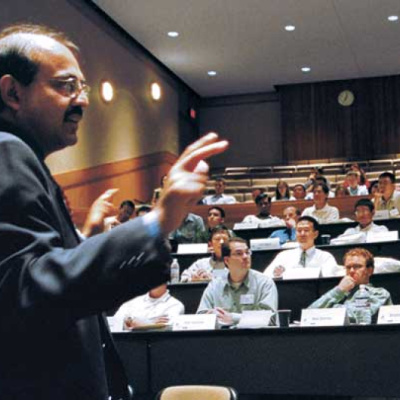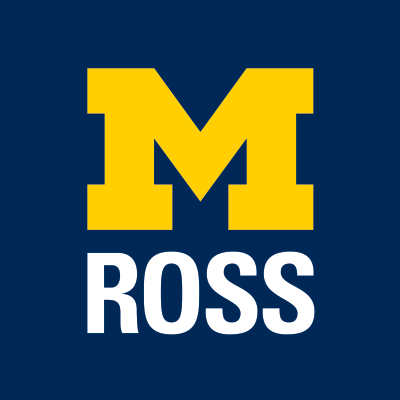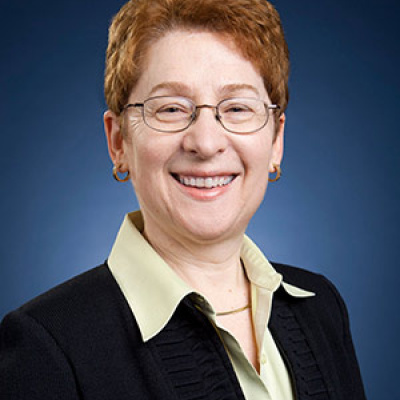Explore the faculty research, thought leadership, and groundbreaking philosophies that established Michigan Ross as one of the world’s top business schools.

Michigan Business School Professor and Erb Institute Faculty Director,Tom Gladwin, pioneered the field of business sustainability with his concept of a "science of sustainable enterprise." It was one of the first scholarly frameworks to bring together the social, environmental, economic, and organizational aspects of competitive companies that likewise are managed to explicitly create value for society. With groundbreaking publications like "Shifting Paradigms for Sustainable Development: Implications for Management Theory and Research" and "Beyond Eco-Efficiency: Towards Socially Sustainable Business" in the 1990s, Gladwin dramatically expanded the scope of traditional management education and business leadership. Throughout his career, and his long-time partnership with the Prince of Wales's Business & the Environment Programme, Gladwin influenced hundreds of CEOs and other top corporate leaders to think deeply about, and take action on, the threat and the opportunity of sustainable business.
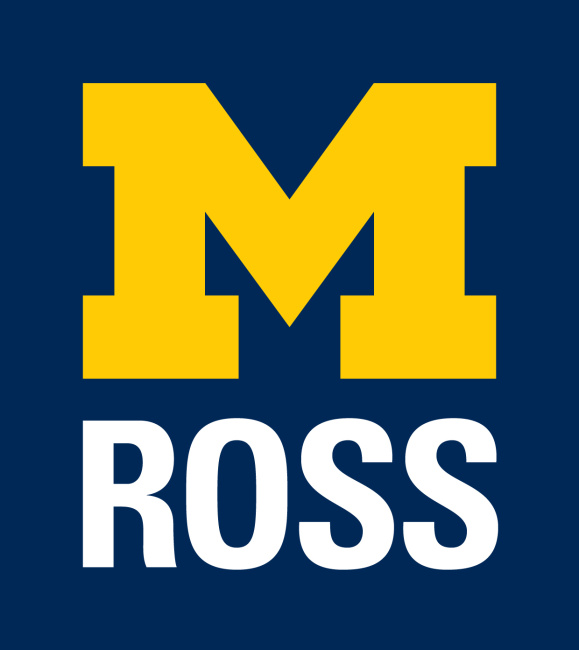
In 1991, Professor Priscilla Rodgers designed an assessment to help the Michigan Business School evaluate MBA students' written communication skills, which was used for course placement. When the GMAT added an Analytical Writing Assessment in 1994, Rodgers conducted research that showed the AWA did not accurately assess management communication and that the assessment criteria and methodology used at the business school were far more meaningful. Rodgers and her team developed five six-point scales that quantified the competencies that MBA students need to be effective writers. In 2017, the business communication area at Michigan Ross moved to an assessment of MBA students' management communication, which included speaking as well as writing, and allowed students to choose a non-credit path toward satisfying the communication requirement. Andrea Morrow, lecturer and director of writing programs, developed a framework based on Rodgers' work called the Ross Management Communication Competencies Framework. As part of the new assessment process, full-time, global, and online MBA students learn about management communication and are assessed using Morrow's framework. If their results show they are low in any of the five competency areas, they can opt to complete targeted work on Canvas, or they can opt to take a business communication class. No other business school has a program like this.
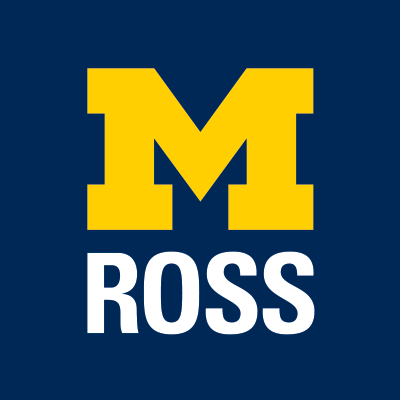
In 1999, former Michigan Ross finance faculty member Josh Coval co-authored a paper that is among the top 50 most-cited papers in finance. The paper shows one of the most intriguing patterns in individual behavior. The strong bias in favor of domestic securities is a well-documented characteristic of international investment portfolios, yet this paper shows that the preference for investing close to home also applies to portfolios of domestic stocks. Specifically, U.S. investment managers strongly prefer locally headquartered firms, particularly small, highly leveraged firms that produce nontraded goods. These results suggest that asymmetric information between local and non-local investors may drive the preference for geographically proximate investments, and the relation between investment proximity and firm size and leverage may shed light on several well-documented asset pricing anomalies.

The Dare to Dream grant program is an initiative by the Zell Lurie Institute for Entrepreneurial Studies. It provides funding to U-M students interested in exploring and pursuing entrepreneurial ventures.
The student grant program offers three different tracks targeted toward early-stage students looking to develop a business concept to integrate entrepreneurship into their academic studies, students who have already developed a business concept and are seeking to validate and assess the feasibility of their idea, and students who are ready to launch their ventures.

As the worlds of trade and culture were globalized in the 1980s, consumers worldwide saw standardized global brands enter and grow in their local markets, displacing local brands that had been dominant for decades. But what were consumers seeing in these global brands, and why were consumers switching to them? How could local brands fight back? These timely and important questions were addressed in a series of research papers by Michigan Ross Professor Rajeev Batra and his co-authors from 1999 through 2019. They showed that if consumers perceived brands as being global, they assumed these brands were of higher quality, capable of bestowing more prestige and status to their buyers, and would bring these buyers closer to the imagined lifestyles of consumers in the home countries of these brands. These papers have been cited over 6,000 times, have been nominated for and won multiple best-paper awards in journals and societies of international marketing, and have been included in lists of the 10 papers in the last 30 years that have made the most contribution to the international marketing literature. Today, as the lure of globalization seems to be receding and local brands seem to be winning again, this work highlights the tensions and trade-offs at play.

”Bifurcation of the Owner and Operator Analysis" was published by Professor Lynda Oswald in 1994. Her research was cited and quoted extensively by the U.S. Supreme Court in its unanimous decision in United States v. Bestfoods (1998) in clarifying parent corporations' direct and indirect liability for their subsidiaries’ actions in the context of CERCLA liability and hazardous waste cleanup. The liability of a parent corporation for the acts of the subsidiary is a complex issue that permeates all areas of corporate law and business relationships, and is not confined to the environmental context found in Bestfoods. Oswald’s research has since informed the decisions of over 55 additional courts -- federal trial and appellate courts as well as state appellate and supreme courts -- in business law contexts as varied as environmental liability, whistle-blowing under the Sarbanes-Oxley Act, the Racketeering-Influenced Corrupt Practices Act (RICO), employment discrimination, medical malpractice, negligence, bankruptcy, and real estate transactions.

Former Michigan Ross Professor Gautam Ahuja's "Collaboration Networks, Structural Holes, and Innovation: A Longitudinal Study" marked a significant turn in the way scholars view the impact of inter-organizational networks on innovation. Until this point, the common perception was more or less linear: the more connections a firm has, the better it is for innovation. However, Ahuja's research added a layer of complexity by considering indirect ties and structural holes in a firm's network. The results of Ahuja's study challenged existing theories at the time and opened up an entirely new area of research. Now, scholars must consider not only the quantity of a firm's connections but also their quality and structure and how these elements influence innovation. This nuanced understanding helped expand the study of inter-organizational networks, underlining how the firms' positions within such networks can dictate their innovation output. This paper is credited with kickstarting a whole new area of research -- inter-organizational networks and innovation -- which focuses not just on the number of connections a firm has but the whole structure of its network and how it impacts its ability to innovate.

In the early 2000s, Professors Tim Fort and Cindy Schipani held the first conference on the role of business in promoting peace. The conference was attended by former Secretary of State Madeline Albright and brought together individuals from academia, business, and government to discuss efforts that could be made to reduce violence in the world. It was concluded that there is a role of business, especially in serving as an unofficial ambassador or role model when conducting business internationally. This event set in motion the beginnings of a new research paradigm on "Peace Through Commerce."
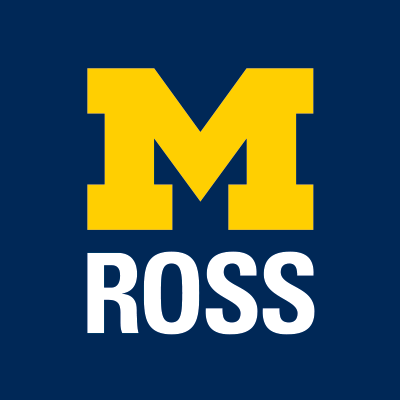
In 1993, former Michigan Ross finance faculty member Victor Ng, co-authored a paper that is among the top 50 most cited papers in finance. Ng's paper defines the news impact curve, which measures how new information is incorporated into volatility estimates. His paper compares and estimates various new and existing autoregressive conditional heteroskedasticity models, including a partially nonparametric one, with daily Japanese stock return data. New diagnostic tests are presented which emphasize the asymmetry of the volatility response to news. Ng's results suggest that the Glosten, Jagannathan, and Runkle Model is the best parametric model. This path-breaking paper demonstrates the use of a new methodology to show the impact of news on stock prices, probably the most important function of financial markets.

No matter the discipline, business research can have a huge impact on diversity, equity, and inclusion. In 2013, Venky Nagar, KPMG Professor of Accounting, along with former Michigan Ross professor Feng Li, published accounting research on U.S. firms initiating same-sex domestic partnership benefit policies.
Li and Nagar’s paper “Diversity and Performance,” published in Management Science, tests if corporate policy supporting LGBTQ+ rights frees all employees to bring their authentic selves to work, thus improving org culture and performance. The paper finds that the nearly 300 firms that adopted these policies between 1990 and 2006 saw significant improvement in operating performance relative to an approximate 10% average stock price increase. If an investor had accordingly timed their purchases of these firms, they would have outperformed ninety-five percent of all U.S. professional mutual funds.
The paper’s reasoning was core to the 2015 Amicus Brief filed in support of legalizing same-sex marriage by the law firm Morgan Lewis on behalf of 379 large and small corporate employers ranging from Apple to Zingerman’s in the landmark Supreme Court case Obergefell v. Hodges.

Professor Emerita Valerie Suslow and Adjunct Professor Margaret Levenstein have pursued a collaborative research agenda on the economics of cooperative behavior among firms, with a specific focus on cartels. Agreements between competing firms to reduce the intensity of competition can include actions such as price fixing, allocating geographic markets, allocating customers, and bid-rigging at auctions. Historically, such cooperative behavior was legal throughout the world but illegal in the United States under the Sherman Act of 1890.
The U.S. National Industrial Recovery Act of the early 1930s suspended price-fixing antitrust laws in certain circumstances. In the mid-1990s, after many decades of inattention, it became clear to competition policy enforcers that cartel activity was rampant and was likely causing substantial consumer harm. This spurred new leniency and amnesty policy tools to become available to firms. In their highly cited article "What Determines Cartel Success?" Levenstein and Suslow make the case that while cartels may break up due to cheating on the agreement, the more insurmountable problems are entry and adjustments in the face of changing economic conditions. "Breaking Up Is Hard to Do: Determinants of Cartel Duration" shows that cartels that turn to price wars to punish cheaters are not stable. Highly stable cartels draw upon a vast toolkit of mechanisms to enhance their stability and, therefore, their duration and economic harm.
Levenstein and Suslow's work has been cited in policy reports by organizations around the world, such as the Organization for Economic Cooperation and Development, the United Nations, and the World Trade Organization. They continue to explore hidden or overlooked sources of harm to consumers that may result from cartel activity, most recently turning their attention to the role played by vertical relationships between firms engaged in horizontal collusion, as well as how collusion may be facilitated by the use of a price index in long-term contracts.

The paper "Value of Information in Capacitated Supply Chains" by Professor Roman Kapuscinski and his co-authors was published in Management Science in 1999. This paper contributed significantly to the understanding of how information sharing impacts the performance of supply chains. Specifically, this paper turned on its head the notion that information would be most valuable in settings where capacity is tight, when the uncertainty of demand is huge, and when the costs of unsatisfying demand are very high. The paper uses careful, rigorous analyses to reveal when information is most valuable and how the value depends on many interrelated factors. Providing an innovative analytical model, Kapuscinski and his colleagues demonstrated when and how the sharing of demand information could remarkably enhance inventory management and order fulfillment for capacity-constrained supply chains. The subsequent literature in operations management has heavily referenced this pioneering work, leading to the development of practical strategies for improving supply chain efficiency through information sharing. Further studies have explored different facets of information sharing in diverse supply chain settings and have considered more complex forms of information, extending the paper's impact in many directions within operations.

The Personal Development Plan is a simple but impactful idea that has now been utilized by approximately 6,000 BBA alums and current students. At its core, the PDP is an Excel document that helps students plan the requirements to graduate, but its usage and value go far beyond just a requirement planning tool. In 2006, the BBA degree, which had for decades been a two-year degree program, was modified to a three-year structure with a small number of first-year preferred admits. Eight years later, in 2014, the BBA curriculum was modified from a 45 business credit requirement to 58 business credits. The changes to the curriculum meant that students had significantly more time, more flexibility, and more choices in how they progressed through the BBA degree. That flexibility increased even more as we moved to a four-year program in 2017. Advisors developed the PDP as a resource to help students make the most out of this expanded college experience.
In 2014, with the launch of the 58-credit BBA curriculum, a new core course was created, BA 200. As part of BA 200, PDP was introduced as a required component of the class and is now a co-curricular component of BA 100 and BA 102. Each year, the undergraduate advising team works with over 625 new BBA students (first-year students and transfers) so that each student develops an individualized plan for their life as a college student. Ensuring that they are planning requirements is an important part of this, but in developing their plan, students are asked to reflect on their goals for their time in college while developing their PDP. What skills and competencies do they hope to develop while they are here? Are there opportunities they want to take advantage of (study abroad, participation in programs through centers and institutes, minors or dual degrees, club leadership, etc.)? The PDP is a living document that travels with students throughout their four years and becomes a reference point for continued conversations and relationship-building with advisors until graduation. The PDP has had an impact on every single BBA student since the fall of 2014, helping to open their eyes to the rich opportunities at Michigan Ross and giving them a roadmap to their unique journey as a Ross BBA.

Professor Joel Slemrod has worked on an agenda to broaden the scope of tax analysis to address several issues that standard economics models of taxation ignore. He has written several articles analyzing and addressing the blind spots of standard economics models and has co-authored a book titled Tax Systems, which outlines the implications of these blind spots. The influence of his work is demonstrated by the recent policy attention given to tax enforcement in the United States and other countries, such as an increase in funding appropriated to the IRS to reduce evasion of high-income individuals and corporations, as well as innovative administrative policy developments through the U.S. Foreign Account Tax Compliance Act and the OECD Pillars One and Two, which subjects a group of large multinational companies to a global minimum corporate tax of 15%. Slemrod's work has received over 35,000 citations, numerous awards and accolades, and a No. 1 ranking among public finance economists per the Research Papers In Economics site.

The Carson Scholars Program at Michigan Ross is a signature feature of the Ross BBA Program and a result of the vision and generosity of David Carson, BBA '55. Carson, the former president of People's Savings Bank in Connecticut, was recognized by Forbes as one of the 500 most powerful people in the corporate United States. Based on his experiences throughout his career, Carson realized that future business leaders should understand how government works to develop effective corporate strategies for participating in the public policy arena. As a result, CSP enables Ross undergraduates to augment their on-campus learning with study in Washington, D.C., where they meet with elected officials, government experts, industry leaders, issue advocates, and lobbyists. Since its foundation in 2005, the program has enabled more than 1,000 alumni to learn about the public policy process from these experts.

From 2000 to 2005, Professors C.K. Prahalad and M.S. Krishnan co-authored several papers on concepts related to how the emergence of digital technologies was transforming business models. From 2005 to 2008, they co-authored the book New Age of Innovation, which introduced the concept of N=1;R=G business model framework. The basic argument was that given the new capabilities emerging from digital technologies, the structure of business models was in the midst of a transformation across industries. They claimed that business models will shift from mass production of products or services to businesses co-creating personalized experiences for one customer at a time. They called this N=1 business model, i.e., businesses will operate on a sample size (N) of one. They argued that to orchestrate this personalized experience for one customer at a time, businesses will not own all resources but will connect with resource partners across the globe (Resources=Global or R=G), and these partners could be big organizations, small businesses, entrepreneurs, or even individuals. They called this business model N=1;R=G. They argued that digital technology was at the center of enabling these capabilities, and no industry will be immune to this change. They presented more than 80 examples in the book. The rest of the book was on the capabilities companies needed to build inside their organizations to compete as an N=1 business. Their primary thesis identified the significant role of software in orchestrating the personalized N=1 experience in an ecosystem of partners and the criticality of the right capabilities in the information architecture and social architecture of companies to thrive in this competition of N=1;R=G ecosystem business models.

